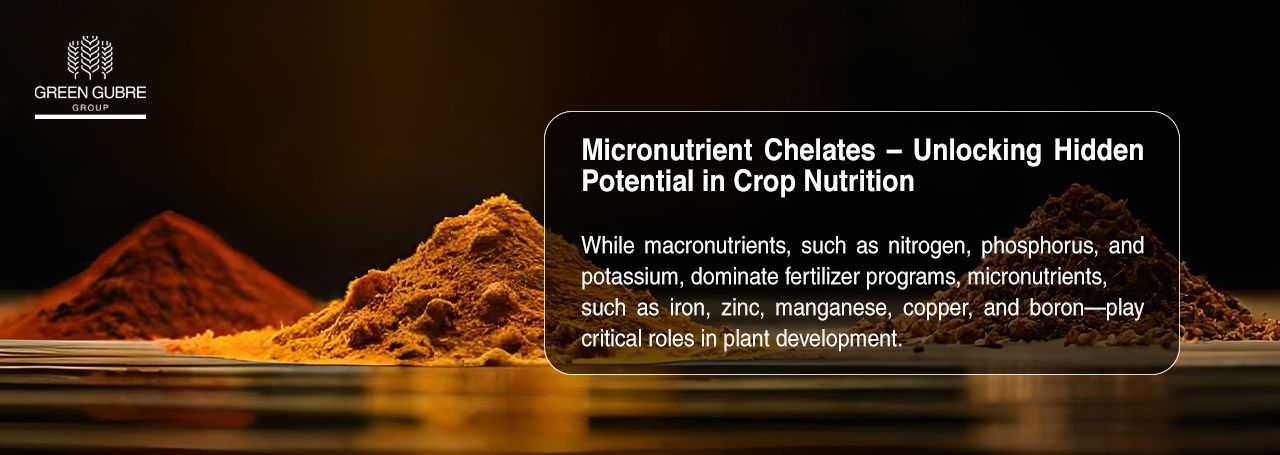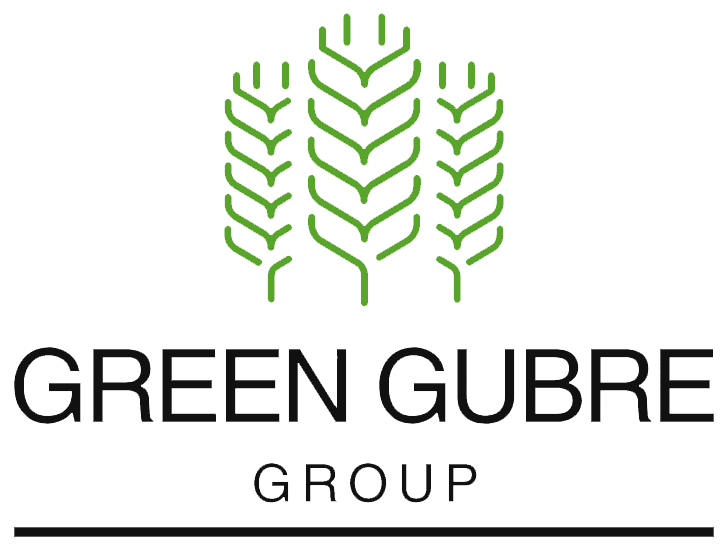Micronutrient Chelates – Unlocking Hidden Potential in Crop Nutrition
Micronutrient Chelates – Unlocking Hidden Potential in Crop Nutrition

Introduction: Micronutrients Matter More Than You Think
While macronutrients, such as nitrogen, phosphorus, and potassium, dominate fertilizer programs, micronutrients—such as iron, zinc, manganese, copper, and boron—play critical roles in plant development. Deficiencies in these “minor” elements can quietly reduce yield, stunt growth, and impair quality.
The challenge? Many soils, mainly calcareous or alkaline ones, lock up micronutrients, making them unavailable to plants. This is where micronutrient chelates offer an innovative, science-backed solution: protecting nutrients from fixation and delivering them in plant-available form.
What Are Micronutrient Chelates?
Chelates are organic molecules that bind with metal micronutrients, creating a stable structure that prevents nutrient loss or deactivation in the soil.
Common chelating agents include:
- EDTA (Ethylenediaminetetraacetic acid) – Effective for neutral to slightly acidic soils
- DTPA (Diethylenetriaminepentaacetic acid) – Better stability in mildly alkaline soils
- EDDHA – High stability in alkaline and calcareous soils, ideal for Fe chelates
Micronutrients are often chelated:
- Fe (Iron)
- Zn (Zinc)
- Mn (Manganese)
- Cu (Copper)
Chelated nutrients can be applied via soil, foliar, or fertigation methods.
Why Chelates Are Superior to Inorganic Salts
- Enhanced Availability in Alkaline Soils: Unlike sulfates or oxides, chelates remain soluble and mobile even in soils with high pH levels or high calcium carbonate content.
- Improved Uptake: Chelated micronutrients are more readily absorbed by plant roots and leaves, thereby increasing their efficacy.
- Reduced Antagonism: Chelates prevent the precipitation of micronutrients in the presence of phosphates or other ions, ensuring compatibility in tank mixes and nutrient solutions.
- Longer Residual Effect: Chelates resist rapid leaching and degradation, offering a longer-lasting nutritional effect.
- Lower Application Rates: Because of higher efficiency, lower dosages are required compared to non-chelated forms.
Source – Journal of Plant Nutrition
Common Deficiency Symptoms and Chelate Solutions
| Nutrient | Deficiency Symptoms | Chelate Form |
|---|---|---|
| Iron (Fe) | Yellowing between leaf veins (interveinal chlorosis) | Fe-EDDHA |
| Zinc (Zn) | Stunted growth, small leaves, poor fruit set | Zn-EDTA |
| Manganese (Mn) | Pale leaves with necrotic spots | Mn-DTPA |
| Copper (Cu) | Wilting, chlorosis, poor grain filling | Cu-EDTA |
Proper diagnosis and chelate selection based on soil pH and crop type are essential for success.
Strategic Use in Different Farming Systems
- Greenhouses and Hydroponics: Precise micronutrient delivery through fertigation
- High-Value Crops: Grapes, citrus, vegetables, and ornamentals benefit from foliar or soil-applied chelates
- Alkaline or Calcareous Soils: Chelates prevent fixation of Fe and Zn
- Seed Treatment and Nursery: Early-stage use ensures strong seedling development
Market Outlook and Adoption Trends
As precision farming expands, micronutrient chelates are gaining momentum globally.
- Market Value (2024): USD 1.6 billion
- Projected Growth: USD 2.8 billion by 2030 (CAGR 9.2%)
- Key Drivers:
- Soil degradation and micronutrient mining
- Government programs promoting balanced fertilization (e.g., India’s “Soil Health Card”)
- Consumer demand for high-quality produce
Green Gubre Group’s Chelate Solutions
At Green Gubre Group, we provide a complete range of micronutrient chelates tailored to regional soils and crop needs:
- Fe-EDDHA 6% (ortho-ortho 4.8%) – For alkaline soils
- Zn-EDTA 12% – For cereals, pulses, and horticulture
- Mn-EDTA 13% – For citrus, banana, and legumes
- Cu-EDTA 15% – For grains and tree crops
- Custom blends: Chelated micronutrient mixes for foliar and fertigation use
All products are compatible with drip, pivot, and foliar systems and supported with agronomic guidance.
Conclusion: Small Elements, Big Results
Micronutrient chelates are among the most cost-effective tools for maximizing yield, enhancing quality, and correcting hidden nutritional deficiencies in crops. Whether in open fields or protected farming, chelates ensure that essential nutrients are available, absorbable, and efficient.
Don’t let invisible deficiencies hold back your crop potential—bring precision to your micronutrient management with chelates.




